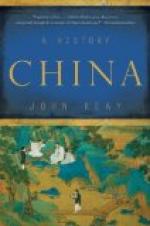The government’s aim was to make Mandarin Chinese the language of all Chinese in Taiwan, as it had been in mainland China long before the War, and to weaken the Taiwanese dialects. Soon almost every child had a minimum of six years of education (increased in 1968 to nine years), with Mandarin Chinese as the medium of instruction. In the beginning few Taiwanese qualified as teachers because, under Japanese rule, Japanese had been the medium of instruction. As the children of Taiwanese and mainland families went to school together, the Taiwanese children quickly learned Mandarin, while most mainland children became familiar with the Taiwan dialect. For the generation in school today, the difference between mainlander and Taiwanese has lost its importance. At the same time, more teachers of Taiwanese origin, but with modern training, have begun to fill first the ranks of elementary, later of high-school, and now even of university instructors, so that the end of mainland predominance in the educational system is foreseeable.
The country is still ruled by the KMT, but although at first hardly any Taiwanese belonged to the Party, many of the elective jobs and almost all positions in the provincial government are at present (1969) in the hands of Taiwanese independents, or KMT members, more of whom are entering the central government as well. Because military service is compulsory, the majority of common soldiers are Taiwanese: as career officers grow older and their sons show little interest in an army career, more Taiwan-Chinese are occupying higher army positions. Foreign policy and major political decisions still lie in the hands of mainland Chinese, but economic power, once monopolized by them, is now held by Taiwan-Chinese.
This shift gained impetus with the end of American economic aid, which had tied local businessmen to American industry and thus worked to the advantage of mainland Chinese, for these had contacts in the United States, whereas the Taiwan-Chinese had contacts only in Japan. After the termination of American economic aid, Taiwanese trade with Japan, the Philippines, and Korea grew in importance and with it the economic strength of Taiwan-Chinese businessmen. After 1964, Taiwan became a strong competitor of Hong Kong and Japan in some export industries, such as electronics and textiles. We can regard Taiwan from 1964 on as occupying the “takeoff” stage, to use Rostow’s terminology—a stage of rapid development of new, principally light and consumer, industries. There has been a rapid rise of industrial towns around the major cities, and there are already many factories in the countryside, even in some villages. Electrification is essentially completed, and heavy industries, such as fertilizer and assembly plants and oil refineries, now exist.




